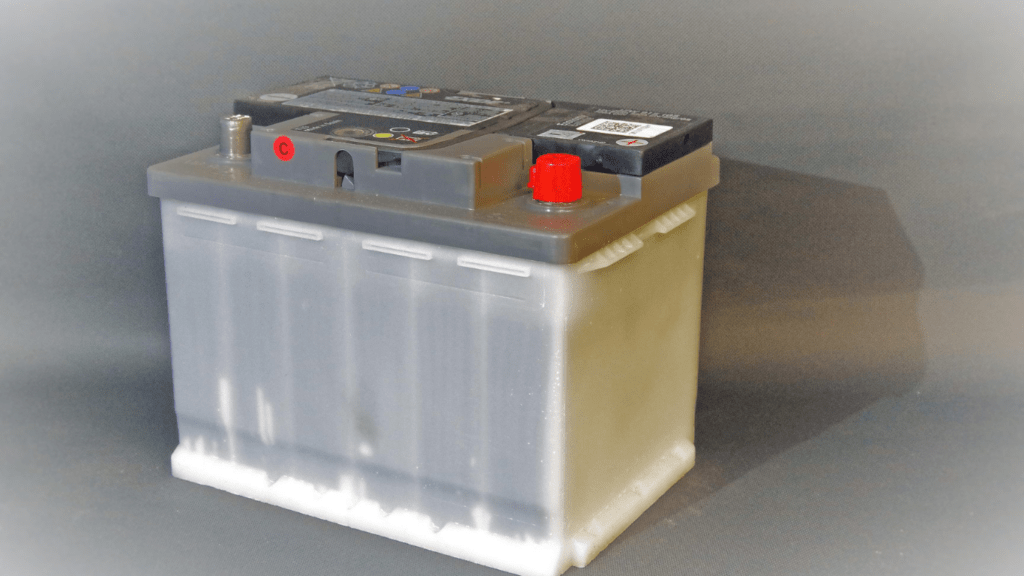Evolution of Car Battery Technology
Car battery technology has come a long way since its inception. Each generation has contributed to the efficiency and practicality of electric cars, making significant strides in both storage and performance.
From Lead-Acid to Lithium-Ion
Lead-acid batteries powered the first electric vehicles in the late 19th century. They offered low energy density and short lifespan, making them suitable primarily for short distances. Lithium-ion batteries revolutionized the industry in the 1990s.
They provided higher energy density, longer lifespan, and lower weight, becoming the standard for modern electric vehicles.
- Low Energy Density: Lead-acid batteries provided about 30-40 Wh/kg.
- Higher Energy Density: Lithium-ion batteries offer up to 250-300 Wh/kg.
- Short Lifespan: Early batteries lasted around 500 charge cycles.
- Longer Lifespan: Newer technologies reach 1,000-2,000 cycles.
The transition from lead-acid to lithium-ion sparred a surge in electric vehicle adoption.
Emerging Alternatives to Lithium-Ion
Researchers continuously search for better alternatives to lithium-ion batteries. The need for higher energy density, reduced costs, and improved safety drives this research.
- Solid-State Batteries: These batteries replace the liquid electrolyte with a solid one, reducing fire risks. They offer higher energy density and quicker charging times.
- Metal-Air Batteries: Utilizing oxygen from the air, these batteries provide a large boost in energy storage capacity.
- Graphene Enhanced Batteries: By incorporating graphene, batteries achieve higher conductivity, faster charging, and longer life.
These emerging technologies show promise to replace or supplement lithium-ion batteries, pushing car battery innovation further.
Key Breakthroughs in Car Battery Technology

Recent breakthroughs in car battery technology are transforming electric vehicles. These advancements are enhancing various critical aspects, making electric vehicles more practical and efficient.
Advances in Battery Longevity
Leading advancements in battery longevity have significantly extended the rechargeable cycles of car batteries. Researchers have developed battery chemistries and configurations that maintain capacity over more charge-discharge cycles.
For example, incorporating silicon anodes into lithium-ion batteries has improved their lifespan. This enhances battery life and reduces the total cost of ownership by diminishing the need for frequent replacements.
Improvements in Charging Speed
Improvements in charging speed are crucial for electric vehicle (EV) adoption. New technologies enable faster energy transfer to car batteries. Ultra-fast charging stations, utilizing higher voltages and current, can recharge an electric vehicle in 15-30 minutes. Battery manufacturers are refining electrolyte formulations to reduce charging time while maintaining safety standards. This makes long trips more feasible and convenient.
Enhancements in Energy Density
Energy density improvements provide higher energy storage in the same physical space. Advances in materials science, such as the development of lithium-sulfur and solid-state batteries, have significantly increased energy density.
These innovations allow electric vehicles to travel longer distances on a single charge. Graphene-enhanced batteries, with improved electrical conductivity, also contribute to higher energy density, leading to more efficient, higher-performing electric vehicles.
Impact of New Technologies on Electric Vehicles
New car battery technologies redefine the electric vehicle (EV) landscape, affecting cost, accessibility, and environmental impact.
Cost Reduction and Market Accessibility
Next-gen batteries slash manufacturing costs. Solid-state batteries, using less material, reduce production expenses. Scaling production of lithium-sulfur batteries lowers costs further, enhancing affordability.
With reduced costs, EVs become accessible to a broader audience, increasing market penetration.
Governments and private sectors support this shift through incentives. Tax rebates and grants encourage adoption. Mass production also benefits from economies of scale, reducing prices over time. It’s a win for both manufacturers and consumers.
Environmental Benefits
Advanced batteries offer substantial environmental gains. They cut carbon footprints by improving energy density and efficiency. Solid-state batteries and metal-air batteries generate less waste during production and disposal.
These technological advancements mitigate harmful emissions, aligning with global sustainability goals.
Recycling initiatives gain momentum, driven by tech enhancements. Battery manufacturers now design units for easier recycling, reducing landfill waste.
Furthermore, the longer lifespan of new battery types decreases the frequency of replacements, leading to less environmental impact. This synergy between technology and ecology ensures a cleaner, greener future for EVs.
Challenges and Future Outlook
Advancing car battery technology faces several obstacles. Overcoming these will define the direction of future innovations.
Technical and Material Challenges
Battery lifespan tops the list of technical challenges. Current lithium-ion batteries degrade, reducing their efficiency over time. High energy density materials like:
- lithium-sulfur
- solid-state cells
show promise, but they face stability issues.
Preventing dendrite formation is crucial since it affects battery life and safety. Addressing these requires breakthroughs in electrolyte materials. Sourcing raw materials like lithium and cobalt presents economic and ethical concerns.
Mining impacts and the need for sustainable practices push for alternatives, posing technical hurdles.
Predictions for the Next Decade
In the next decade, expect significant advancements in car battery technology. Solid-state batteries might see widespread adoption, offering higher energy densities and safety.
Artificial Intelligence (AI) and machine learning will likely optimize battery management systems, extending longevity and efficiency. Recycling initiatives will become more integrated, driven by both legislation and technological advances.
Fast-charging infrastructure will expand, reducing charging times and increasing convenience. By 2030, enhanced energy storage solutions could make electric vehicles the norm, aligning with global sustainability efforts.

